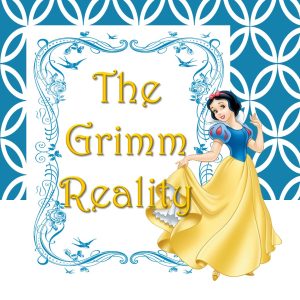 I have a small placard that reads, “Writer at Work: Bystanders will be written into the story.” It’s a fitting tribute to the fact that inspiration and character development can, and often does, come from anywhere.
I have a small placard that reads, “Writer at Work: Bystanders will be written into the story.” It’s a fitting tribute to the fact that inspiration and character development can, and often does, come from anywhere.
In my novel, one of the characters has an aversion to sex. It’s a tidbit of backstory that isn’t revealed until the very end of the book and I liked having him juxtaposed with the main character, who happens to be the village whore. I even went to the trouble of borrowing sex therapy books from my counselor in order to craft a better backstory for him.
Ultimately, I returned the books defeated and stuck with what I know: livestock. In my AVS 222 class, Reproduction, Breeding, and Physiology of Lactation, I learned that if a stallion’s first experience is bad, if he falls, is kicked, etc., he will be ruined and never mount again. Apparently, there’s no human equivalent for this, or at least there wasn’t in the books I borrowed from my shrink.
I’m pretty sure the only thing I accomplished with that foray into psychology was convincing my therapist that I have some strange sex hang-up. I’m under the impression that he still doesn’t believe it was research for a book. He also insisted, “There are better ways to get your jollies than reading case studies.” Regardless, we shouldn’t discount psychology when it comes to character development. This is a lesson best learned compliments of the brothers Grimm.
I read two things recently that highlighted the story of Snow White. First was an article by Psychology Today, Growing Up with a Psychopathic Mother is No Fairy Tale. The second was a book where the last case study mentions the psychotic mother fairytale motif: Good Morning, Monster: A Therapist Shares Five Heroic Stories of Emotional Recovery.
In Grimm’s original version, Snow White’s tormentor is her biological mother. The cruel cold-hearted Queen cannot bear to share the spotlight with anyone, not even her own daughter. In a fit of rage, the Queen orders a huntsman to kill her Snow White, insisting the girl’s heart be returned as proof. The huntsman spares the child, bringing back a boar’s heart instead, which is cooked by the palace chef and eaten by the Queen.
A murderous psychopathic cannibal reveling in the destruction her daughter is a perfectly acceptable bedtime story, right? Unfortunately, the story doesn’t stop there.
When the Queen’s mirror reveals that Snow White is still alive, the Queen pursues the girl and attempts to murder her on three more occasions. Ultimately, thwarted in every case. Over the course of the story, there’s absolutely no mention of Snow White’s father. And that’s where the Grimm brothers faltered.
Snow White’s father is the King! Surely, there were advisors, servants, other people in the castle who knew what was happening. How did multiple attempted murders escape his attention? The sad truth is, it probably didn’t.
I know a child who grew-up in a household with the psychotic mother dynamic. The mother is highly volatile, prone to hysteria, manipulative, and often flies into fits of rage. She garners all the attention in the room. Meanwhile, everyone wonders how the father is so oblivious to the maltreatment of his daughter and questions why he doesn’t intervein.
Sadly, in this case, the father is the instigator. Dad thinks it’s funny to induce vomiting, and does so quietly, behind the scenes. When his daughter throws-up, mom flies into a rage, beating and berating the child for ruining her clothes, the carpet, the day, ectara ad nauseam. So, while all the focus is on mom, dad quietly sits in the corner, watching the scene play out. No matter how horrifically abused the girl might be, dad does nothing to spare his child because he is the initial aggressor, and so long as the attention is on mom, he’s safe from suspicion.
This is why the King’s absence in the story of Snow White is just as poignant as the Queen’s presence. And it’s why the story falls flat. The backstory and motivations of our secondary characters are just as important as that of the main characters. This is especially true for our antagonists. Their motivations help shape the narrative, raising the stakes for the other characters, and providing a richer, fuller, more satisfy story for the reader.